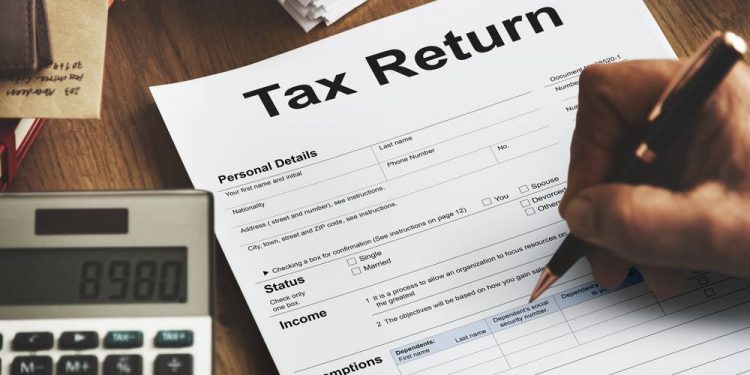For many employees in Ghana, the amount of taxes they pay on their wages and salary is so high that, they do not bother to pay attention to the taxes deducted.
In Ghana, sources of income that are subject to income tax include income from employment, income from business and income from investment.
Tax laws have made provisions for employees to reduce their taxes in the form of personal tax reliefs if they are so minded.
The problem is that many people in Ghana do not take such an advantage leading people to pay even more in taxes.
In the 2019 budget, the government took a bold step to increase the amount of relief to individuals. The ministry of finance indicated the total relief was expected to cost the nation in excess of GHS 133m per Annum.
Some of the reliefs saw an increase of 900% over the previous years. But the question is are Ghanaian employees taking advantage of these reliefs?
In this article, we take a look at how employees can reduce their taxes by simply complete a one-page form and endorsed by their employers.

PERSONAL TAX RELIEFS:
In calculating the tax payable by individuals, tax laws take into consideration the person’s personal circumstances in life. For instance, a married individual who has three children, in school, this individual provides the necessaries of life of his aged relatives. Such a person is likely to be hard-pressed in life than a single unmarried person who has no responsibilities. On this basis, the tax system has personal reliefs and allowances which are intended to reduce the person’s tax liability.
WHAT IS A TAX RELIEF?
Tax relief is an approved deduction intended to reduce the taxable income and thereby lessen the tax burden on the taxpayer. The amounts are deducted from the assessable income to reduce the amount that should be subjected to the tax rates in force. The taxpayer’s personal circumstances are always taken into consideration in granting the relief if certain conditions are satisfied.
There are conditions that guide tax reliefs.
1. The reliefs are mostly claimable by individuals as opposed to companies and trust.
2. The reliefs are claimable only by resident’s individuals as opposed to non-residents.
3. The reliefs are available for a year of assessment. They cannot be carried forward. Take it in the year or lose it.
4. The reliefs are personal in nature and they cannot be transferred from one person to another.
The following reliefs are allowed under the 5th Schedule of the Income Tax Act, 2016 (Act 896).
1. MARRIAGE OR RESPONSIBILITY RELIEF-GHS 1,200
A married person with a dependant spouse or an unmarried person with dependant children can be hard press in life than someone who is not married. In line with the principle of equity, the PNDCL 166(1986) enacted this relief to individuals. Section 5(2) of the PNDCL 166 provided relief of 2,500 Cedis (GHS 0.25 today) to:
i. A married man or married woman who maintains the husband and the household, provided that the husband of a woman who claims this relief shall not be entitled to the same relief;
ii. An unmarried man or woman with two or more children who depend on him/her;

Conditions:
a. The relief is currently GH¢1,200.00 per year.
b. Only one of the spouses (either the husband or the wife) is entitled to this relief.
c. A single unmarried person must have at least two defendant children to qualify
d. The Employer must certify the details provided to be true
Self-employed individuals can also apply by completing the tax relief application form. The individual must prove that he or she provides the necessities of life for the dependant spouse or children. The 5th Paragraph of Act 896 defines a dependant as follows: “Dependant child, spouse or relative” in respect of an individual, means a child, spouse or relative of the individual for whom that individual provides the necessaries of life”.
2. CHILD EDUCATION RELIEF-GHS 600
This relief is intended to help take care of children’s education. It is granted to an individual sponsoring the education of the individual’s children or wards in any recognized registered educational institution in Ghana. It is claimable by one parent only with respect to a child. A “Child” under the law includes an adopted child or ward. Under the PNDCL 270 1991 amendment, this was modified to cover children in both first and second cycle institutions. However, under the Income Tax Act, 2015 (Act 896) the level of education is silent.
Conditions
a) The relief is GH¢600 per child per annum up to a maximum of three (3), GHS 1,800 in total.
b) It is granted to persons who have children/wards in recognized educational institutions in Ghana.
c) Only one of the parents is entitled to the relief for the same child. This means that both parents cannot claim this relief in respect of the same child. Where the children are more than three, both parents may decide who should apply for which child.
d) The Employer must certify the application form to be true.
3. DISABILITY RELIEF-25% of assessable Income
The Disable Relief serves as an incentive to individuals who in spite of their disabilities are in gainful employment or business. It is granted to persons who are physically challenged who earn income from any business or employment. The applicant must prove to the satisfaction of the Commissioner that he is disabled.
Conditions
a) The relief is limited to 25% of assessable income from business and/or employment only. Income from investment is not included in calculating this relief. Disability does not affect investment income.
b) It is granted to a person who is certified to be disabled by the Department of Social Welfare. A certificate is thus required to be produced to the employer from the Social Welfare Department after a physical examination of the person.
4. OLD AGE RELIEF-GHS1,500
This relief is granted to persons who are sixty years and more and earns taxable income.
Conditions
a) The relief is GH¢1,500 per annum or the total income, whichever is less.
b) The relief is granted to persons who are sixty (60) years and above and are in receipt of taxable income.
5. AGED-DEPENDANT RELIEF -GHS 1,000
This relief is for individuals who have a dependant relative above sixty (60) years. This relief can only be claimed in respect of two dependant relatives. Where two or more persons qualify in respect of the same relative, only one relief would be granted. The dependant relative should be any dependant other than a child or spouse.
Conditions
a) The relief covers only two dependant relatives.
b) Dependant relatives do not include children and spouse
c) The relative must be 60 years and above
d) Only one individual taxpayer can apply in respect of the same relative.
6. COST OF TRAINING/SELF-IMPROVEMENT-GHS 2,000
Any individual taxpayer who undergoes training to update his professional, technical, or vocational skills or knowledge is eligible for relief of GH¢2,000 or the cost of training whichever is less.
7. CATEGORIES OF PERSONAL RELIEFS
The reliefs come in two forms.
i) Upfront Reliefs: This is granted to the employee on monthly basis. The employee will receive it through his payroll on a monthly basis. The following are the upfront reliefs:
a) marriage or responsibility relief;
b) child education relief;
c) old age relief;
d) aged dependant relative relief; and
e) Disability relief.
ii) Reliefs granted upon the filing of Annual tax returns: These reliefs are granted to a person only when he files his annual tax returns.
THE TAX RELIEF APPLICATION FORM FOR UPFRONT RELIEFS
Regulations 10 of the Income Tax regulations, 2016 (L.I 2244) provides the rules on accessing the reliefs. The provisions under regulations 10 mean that the employee must apply for the upfront reliefs. A prescribed form called Tax Relief Application Form is used to apply. Employers are advised to file this form on behalf of all their employees. A taxpayer must file an annual tax return to enjoy the other reliefs which are not upfront.
Types of Relief (In Ghana Cedis)
Year Marriage/
Responsibility Child Education Old Age Disability Aged Dependant Cost of Training
1986 0.2 0.1 1.5 20% – –
1987 0.3 0.3 1.5 20% – –
1988 0.4 0.5 2.5 20% – –
1989 0.6 0.7 4.0 20% – –
1990 0.6 0.7 4.0 20% – –
1991 1.0 3.0 8.0 25% 1.2 –
1992 1.0 3.0 8.0 25% 1.2 –
1993 1.0 3.0 8.0 25% 1.2 –
1994 1.0 3.0 8.0 25% 1.2 –
1995 5.0 8.0 12.0 25% 3.0 –
1996 30.0 24.0 30.0 20% 20.0 –
1997 30.0 24.0 30.0 20% 20.0 –
1998 30.0 24.0 30.0 20% 20.0 –
1999 30.0 24.0 30.0 20% 20.0 –
2000 30.0 24.0 30.0 25% 20.0 –
2001 30.0 24.0 30.0 25% 20.0 50.0
2002 30.0 24.0 30.0 25% 20.0 50.0
2003 30.0 24.0 30.0 25% 20.0 50.0
2004 30.0 24.0 30.0 25% 20.0 50.0
2005 30.0 24.0 30.0 25% 20.0 50.0
2006 30.0 24.0 30.0 25% 20.0 50.0
2007 35.0 30.0 35.0 25% 25.0 100.0
2008 35.0 30.0 35.0 25% 25.0 100.0
2009 35.0 30.0 35.0 25% 25.0 100.0
2010 35.0 30.0 35.0 25% 25.0 100.0
2011 35.0 30.0 35.0 25% 100.0 200.0
2012 200.0 200.0 200.0 25% 100.0 200.0
2013 200.0 200.0 200.0 25% 100.0 200.0
2014 200.0 200.0 200.0 25% 100.0 400.0
2015 200.0 200.0 200.0 25% 100.0 400.0
2016 200.0 200.0 200.0 25% 100.0 400.0
2017 200.0 200.0 200.0 25% 100.0 400.0
2018 200.0 200.0 200.0 25% 100.0 400.0
2019 200.0 200.0 200.0 25% 100.0 400.0
2020 1,200.0 600.0 1,500.0 25% 1,000.0 2,000.0
Conclusion and way forward:
It appears tax policies over the years have not improved tax reliefs granted to taxpayers. In some jurisdictions, taxpayers enjoy bigger tax reliefs. It is hoped that government policies will pay attention to this area and revise the reliefs on annual basis. The current process of applying for relief annually should also be automated. Indeed, when managed properly the tax relief system can help bring on board more taxpayers.
Source: citinews.com





